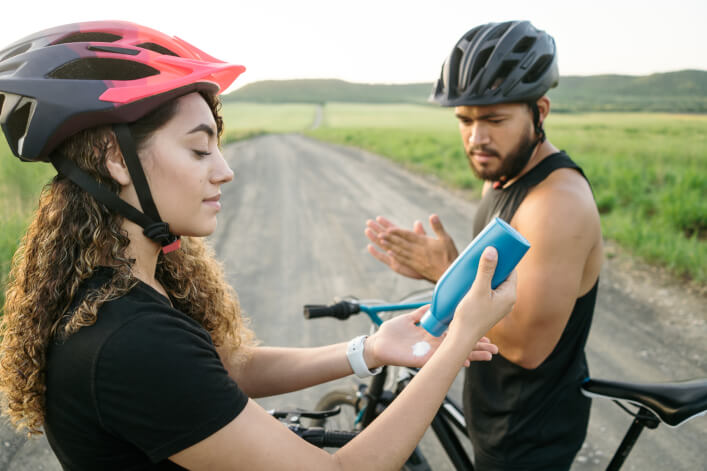
It’s unavoidable – we like to spend a couple of extra hours outside in the spring and summer months. But so does the sun. It’s the time of year when the days are longer, and the sun is bright. It’s also the time of year when we are exposed to more ultraviolet (UV) rays.
Skin cancer is diagnosed more than any other cancer, with basal and squamous cell cancers being the most common types. The risk of being diagnosed with skin cancer increases as you age. Here are some important numbers to remember when it comes to skin cancer:
0 - 6 months
Avoid having babies younger than 6 months in direct sunlight. Dress them in protective clothing and hats.
1
Examine your skin, head to toe, at least once a month.
1%
Melanoma diagnoses make up 1% of all skin cancer cases. Though melanoma is rare, it is the deadliest type of skin cancer.
2 - 30 - 2
Apply two tablespoons (one ounce) of sunscreen to your entire body 30 minutes before going outside. Reapply every two hours.
3
When tanning, the American Cancer Society (ACS) suggests avoiding these three techniques: sunbathing, tanning beds and sun lamps.
6 mm
If you notice an area on your skin that has grown to the size of a pencil eraser (6 mm) or larger, see a dermatologist.
6 months
Begin using sunscreen on babies at 6 months.
10 a.m. – 4 p.m.
Try to avoid or limit your time in the sun between 10 a.m. and 4 p.m. This is when UV rays are strongest.
30+
If you’re spending time in the sun, the ACS advises using a broad-spectrum sunscreen with an SPF (sun protection factor) of 30 or higher. Consider wearing sunscreen year-round, even on cloudy days.
<50
Women are more likely to get skin cancer before they turn 50 years old.
50<
After age 50, men are more likely to get skin cancer.
Enjoy the sun but protect your skin.
Learn more about skin cancer here. To find a dermatologist near you, click here.
Karmanos Locations
Find a Karmanos Cancer Institute near you.
Click here